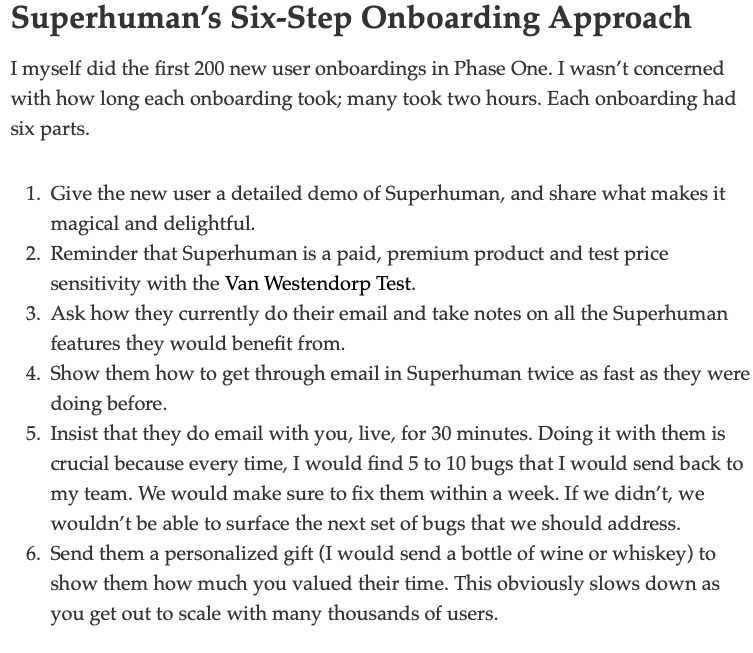Product Experience Marketing Framework for Brand & Growth
The Product Experience Brand & Growth Framework helps startups to focus on leveraging the product experience to scale every stage of the customer journey for successful go-to-market plans, growth models, and brand building.
Last updated: December 6, 2021
I’ve seen many things in startup marketing that work—or don’t work. One thing I’ve learned is that using the product experience as your North Star—from positioning to onboarding and customer advocacy—helps startups to focus and scale. In this article, I want to share my learnings and explain three things:
- How the focus on the product experience helps to reach more with fewer resources
- How to align product, sales, marketing and customer success teams and their goals
- How the product experience interacts with Market, Brand and Growth to scale the customer journey
- How to build a Go-to-Market plan by using hybrid models combining product-led growth with marketing-led and sales-led elements
- The simple 5 STARS Product Experience Growth Framework to map your go-to-market and customer journey
Why focusing on the Product Experience is the North Star for startup teams
Startups must grow rapidly to build a sustainable business. Marketing is challenged with a variety of channels and tactics to generate revenue. Rather than focusing on where customers experience the value and using this as the foundation for brand and growth, marketing is often disconnected from the product experience and leaves the customer journey far too early which leads to a waste of resources and slow growth.
It’s not enough to build a great product. Startups must build a great product experience and scale every stage of the customer journey. The old way of building a customer journey where one team hands over to another is outdated. Teams pass the baton from stage to stage and fail to create a unified journey and scale it for growth and brand. Overwhelmed by the myriad of marketing approaches and strategies, companies waste valuable time and resources with:
- Marketing channels that are not focused on the product experience,
- Positioning company and products at the same time (often not aligned),
- Leaving the customer journey far too early before the retention phase (hand-over problem),
- Missing to scale every piece in the journey (especially the onboarding experience),
- Creating unnecessary negative friction in the buyers’ journey through building a lengthy process.
The product experience mindset solves this problem by having a clear focus on utilizing the product experience as one of the most powerful marketing tools. Growth and revenue come from users and customers—and the better the product experience, the easier it is for marketing, product, customer success, and sales teams to make customers happy—hence, the more revenue startups can generate.
The only channel you ultimately control is the experience of your users and whether you can successfully scale them to acquire more.
Shaun Clowes, SVP Product Management, MuleSoft
If you have used products like Slack, Figma, or Superhuman, you’ve experienced product experience marketing without realizing it. You use the product and trust the brand—probably without knowing anything about the company.
How the Product Experience connects Market, Brand and Growth
The three key marketing areas are market, brand and growth. The market part provides the basis for implementing the startup vision: problem, use case, user. On this basis, positioning, messaging and the story for the brand is created (Brand as a demand accelerator). The growth model is based on market information and is supported by the brand. For startups, the focus should be on the product experience, which is much more than just using the product.
Imagine you have a spotlight and focus it on your customer touchpoints. You focus on where you have the biggest levers to scale and you discover areas that you haven’t considered before.
Dirk Schart, CMO, RE’FLEKT
Product experience in this context is not only about the actual use of the product. It is rather about the experience a customer has around the product. It is about questions like what problem exists in the market, how it can be solved, in which context the product is positioned, how aware the customer is for the solution or our product, and what it takes for the buying process.
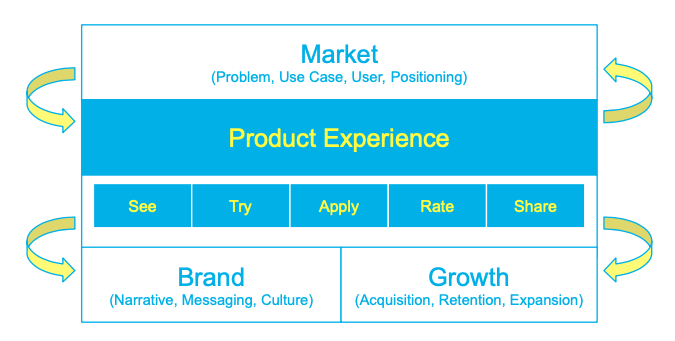
It helps marketing and growth teams become aware of what they are primarily focused on, and to allocate limited resources to the product experience and grow around the user as quickly as possible.
How to expand the marketing involvement and scale every piece of the customer journey for brand and growth
So far, it’s mostly product and customer success teams that take care of the product experience. Marketing has valuable insights and data about the market, the alternatives, and the users but shows a decreasing involvement in the customer journey.
This is a common mistake. Exactly when it comes to creating growth in the core and using the feedback and the voices of the customers for the brand, marketing drops out. A typical problem of handover between Marketing, Sales, Product and Customer Success based on traditional patterns.
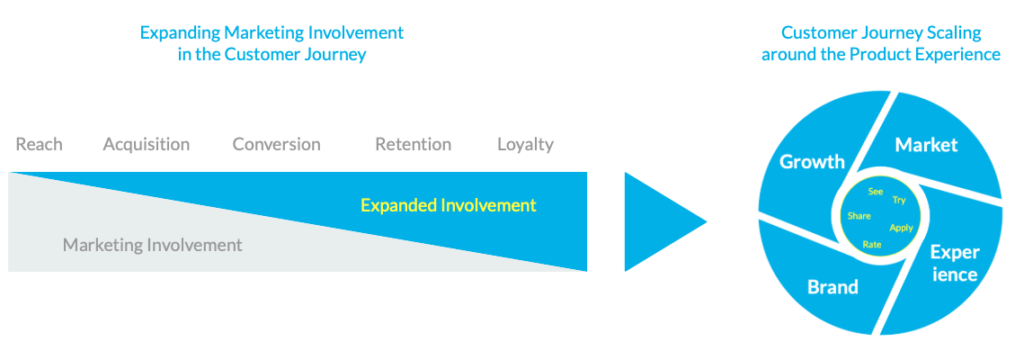
Modern go-to-market and growth strategies unite the disciplines around the product experience and scale every opportunity. Marketing-led, product-led, sales-led: in the acquisition phase hybrid models deliver most value. In the classic retention phase, it is decided where customers are headed and how the habits of users can be influenced. In the final loyalty phase, customers become fans, which is valuable input.
Therefore, the focus in the Product Experience Growth Framework is to expand the involvement of marketing in the apply, rate and share stage and to scale for topics like onboarding, user feedback for positioning and customer advocacy.
Let’s link the areas to exploit the full potential of the product experience. Here’s how Product-first marketing helps startups:
- Strategy and goals are focused around product and users, marketing budgets are allocated more efficiently with a product experience focus
- Product, sales, customers success and marketing teams are aligned around the product experience
- Product gets valuable insights and support from marketing, user feedback and beta groups drive product experience improvements
- Onboarding is improving user adoption and helps to build the brand with the product experience as its foundation
- Bolder positioning and clearer messaging through a focus on the product experience, story and brand is connected to the product experience
- Content converts better by understanding problem, vision, and product in detail, thought leadership helps to own the perception
- Trust and credibility are built with a solid foundation and evidence, virality and word-of-mouth can be fully used for marketing purposes
The framework helps to be laser-focused on building a unique product experience. This includes describing the problem in the market, being aware of existing alternatives, and targeting the addressable market. The input from marketing, sales and product to turn the vision into a product is the starting point of the loop.
By using the product experience, marketing can build the story and brand around it. The users help to build the perception of the product and drive virality and word-of-mouth. Trust and credibility are much easier to build and topics like evidence and economic value are a no-brainer.
Product experience and the connected brand give sales and customer success a solid basis for happy customers and growing revenue. The growth results in form of revenue and new users and customers will be re-invested in the product experience to close the loop and increase velocity.
The Five “STARS” of the Product Experience Brand and Growth Framework
With the product experience and customer journey scaling mindset, the three essential marketing areas can be planned and implemented (Market, Brand, Growth). For this purpose, we use a framework with five steps (5 STARS), which are oriented to the product experience and set the focus.

Let’s have a deeper look at each of the 5 elements and understand how we can use it:
See: How customers perceive our solution
How do customers “see” our solution to their problem. The first of the five elements is a bigger block that aims to better connect the narrative and content with the product experience. This starts with a strong focus on our product positioning and messaging—often underestimated, especially by early growth phase startups. Based on the product positioning, the messaging and narrative play an essential role.
The more connected the narrative and brand are to the product experience, the easier is it to build trust and credibility. The key is to avoid building the brand with fluffy marketing claims but use the outcome of the third, fourth, and fifth elements (Apply, Rate, Share).
Keep in mind: marketing is a battle of perceptions, not a battle of products. It’s how customers see our solution that matters, and by focusing on the product experience, we create an advantage that is both believable and exciting. The content that customers are looking for depends on the awareness stage of your users and buyers (The Content-User Fit Model). The focus is on a real product experience, not a product show.
The example for the first element will raise question marks at first sight. Why? Because it is not a startup but almost every startup knows the company: Andreessen Horowitz. Precisely because at first glance there is no typical product and everything is defined by the product experience, I think A16Z is an excellent example of how PFM works.

A16Z had a harder time than many startups to be seen in the VC jungle. But the clear focus, the excellent experience, and the clever integration of “product” and marketing have given Andressen Horowitz a clear advantage in perception by positioning their expertise (solution) especially with the help of media (How to build a Media Strategy like Andreessen Horowitz).
A16Z is perceived as a leading VC, a VC that is in the driver’s seat, not a follower. Would you not trust A16Z to be the best solution for your startup? Remember, marketing is a battle of perceptions, not a battle of products. This is why it is very important to focus on the product experience as “proven perception” for your marketing.
Try: How customers test and feel our product
In the second element, we see the possibilities of product demos and product testing, where marketing can support both sales and the product team to further develop the experience from the “see” phase. This phase can be designed differently depending on the model (product-led, sales-led, sales-assisted).
While a trial or freemium model can be used in a product-led/bottom-up approach, a demo plays an important role in sales-led/top-down models. Product-led models have the advantage that customers can quickly test for themselves. On the other hand, sales-led or sales-assisted models offer the opportunity to add a personal touch. The goal is to show the customer a realistic idea of the solution to his problem. Marketing can create a unique experience in the demo call for sales-led products that require pre-qualification.
A good example for a sales-led model is G2 Crowd, a customer review platform for B2B software. G2’s demo calls focus on taking the customer by the hand to show how the platform can be used and what it takes to be successful. Instead of a standardized check, it is about the individual possibilities and many tips. The result is more or less an anticipation of the product itself and much more personalized than the competition.
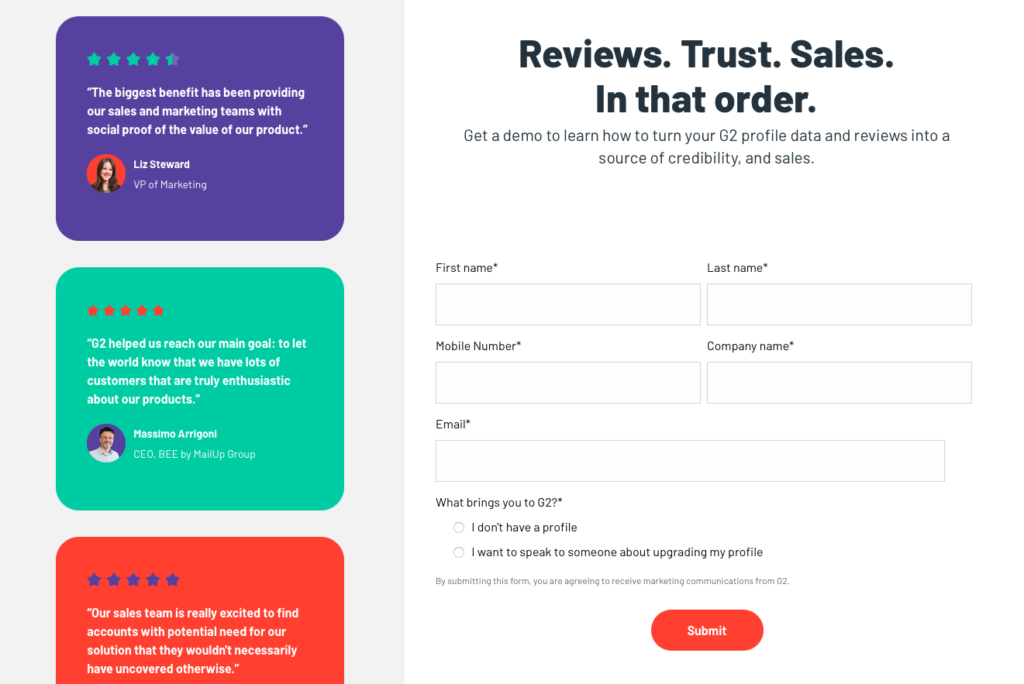
A demo call isn’t something you “must” do, it is a marketing and sales tool to give customers a preview of what will happen when they buy. Product-led models let users try the product without any sales contact. SurveyMoneky has motivational elements for users to test the tool. Besides the free demo account, you can directly find templates and guides for many different topics, which make the start and real testing easier.
Apply: How customers use and adapt our product
In this stage, the lead becomes the customer and the topic of onboarding takes an important place. Hardly any other element offers so much untapped opportunity. Whether personal onboarding or content on-demand, in this phase marketing, product, sales, and customer success have everything in hand to activate the new customer and to use it for the next steps on the marketing side.
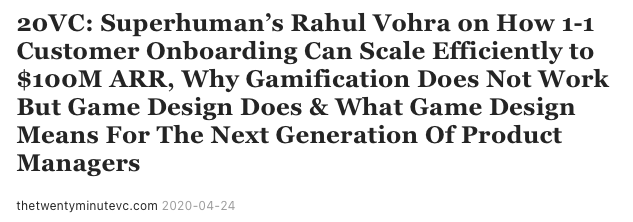
Superhuman might be an extreme example for personalized onboarding but at the same time, it is a great example of how marketing can use onboarding for brand building and growth. This doesn’t seem like the latest invention in the tech world. Nevertheless, Superhuman has managed to create a huge demand with long waiting lists through targeted FOMO activities.
In particular, the personalized onboarding, in which initially Superhuman CEO and Founder Rahul Vohra personally accompanied new users, attracted attention up to TechCrunch reports. Superhuman makes onboarding both a requirement and an experience to ensure that users take advantage of all the features. Many knew about Superhuman because of the product experience around onboarding before they knew exactly what the tool does. Superhuman’s marketing team uses the product-first approach and builds the brand around the experience.
Rate: How happy our customers are with the product experience
The fourth phase is another milestone for the customer relationship. This is where it is decided how satisfied the users are and whether they can be activated permanently. Marketing has the task of supporting both product and customer success in forming the habits of the users in order to ensure permanent use.
After marketing has already analyzed the user in detail in the first element, this experience can help to understand which rewards are needed to change habits (How Habit Loops impact Tech Adoption). Marketing initiatives around the product experience help to increase retention and avoid churn.
Positive user feedback, e.g. from user acceptance testing, is incorporated into product materials and supports branding. At the same time, we can leverage customers in beta groups to provide feedback for positioning, messaging and content. The learnings go back to the market area to sharpen use cases, understand users better and improve the content at the touchpoints.
Share: How customers talk about our product
The fifth element is a source for our brand as well as for growth. We transform customers into fans. From customer testimonials, success stories to event participation, everything is possible. In line with the product-first approach, the focus is on the story around the product experience. Contributions in the media, customer reviews on platforms like G2 or Capterra help our brand to gain credibility and to control our perception.
Customer advocacy and scaling each customer interaction raises our profile. Snowflake is a great example of how to leverage positive feedback and success on the customer side. Whether it’s short video statements from webinars, landing pages with customer successes, or a podcast led by a former journalist.
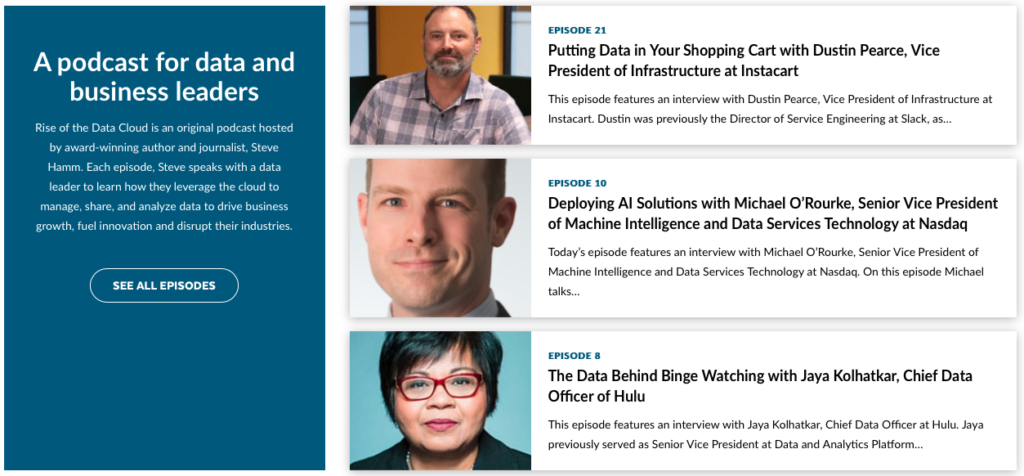
Successful startups using the product experience to reach expedite growth
Product-led growth (PLG) has shown in recent years how important a focus on the product is. While PLG is a go-to-market strategy, the Product Experience Growth framework aims to use the product experience as a business tool for brand and growth as well as to link product, customer success, and marketing more closely. A few examples of hyper-growth startups and unicorns focusing on the product experience:
- Superhuman is one of the best examples showing how onboarding can be used to build a brand in a very short time and generate awareness leading to hyper-growth
- Miro is a virtual whiteboard that allows teams to collaborate more efficiently. Miro’s product grew rapidly because of the product experience and helped to build the brand and growth model.
- Slack is a collaboration tool that is growing faster than Microsoft Teams because of its product-first marketing approaches in which the users feed their growth loops and fuel word-of-mouth.
- Figma is a design tool (meanwhile used by many non-designers) that is only known because of their product experience. Figma’s growth is based on a bottom-up approach and a great product experience which enables their sales teams to win larger enterprise deals.
- Salesforce is probably the oldest example of successful product-first marketing. The “End of Software” strategy was directly connected as a differentiator in the product and built the foundation for the brand.
All of the companies have in common that they build growth and brand around the product experience. The example of Salesforce shows that expanding the brand on a company level works once the growth foundation has been built and resources are available.
A deeper look at the impact of the Product Experience on Market, Growth and Brand
1. Market: Product experiences are the foundation for startups
According to CB Insights, 42% of the startups fail because there is no market need for the product. Pricing issues (18%), user un-friendly product (17%) and poor marketing (14%) are further reasons for failure. This is why it is important to put the product experience at the center of a startup’s marketing plan.
Market engineering with a product-first lens is laser-focused on describing the problem, the vision how to solve it, and the product delivering the experience. Not spending enough time to build a unique product experience will make marketing much more difficult and expensive.
Most important topics for Market topics:
- Understand the problem of the customers
- Make sure to differentiate between vision and customer feedback (otherwise you will only get faster horses)
- Helping the CEO to translate tech into value
- Be aware of the existing alternatives (not only focusing on competitors)
- Support product with building the product experience
2. Brand: Connecting brand and product makes the difference
The buyers’ journey has changed in the past years. Evaluating companies is still a part of the game but startups who can show the product early and let users get their hands on it sell faster and at a lower cost. Also, trust and credibility are heavily influenced by the product experience and not the company only.
Recommendations and reviews are two examples that made their way from B2C to B2B. Many of the hyper-growth startups use virality and word-of-mouth. In all of these examples, the product experience is the basis for influencing decision-making and building trust and credibility.
When Uber and Lyft ran into the issue that users did not trust in the quality of drivers and their cars, they built trust with the experience itself. How do you want to show that private cars are safe and drivers reliable without the product? The trust came through the product experience, not via company-based brand campaigns.
Slack more adoption than MS Teams, MS can use their existing power but do you think you can rather build Slack or MS style company today?
Most important topics for the Brand:
- Position the product experience with the right context
- Create a compelling narrative covering problem, vision and product—and add the company
- Build a constant messaging that the team, as well as users, can easily use
- Build a pitch deck around the product experience (not around the company’s hero status)
- Focus on becoming the go-to-place for the problem/vision/product topic
- Position CEO and team members to talk about the product experience from different perspectives
- Build the brand or category based on the product experience
3. Growth: Revenue driven by the product experience
It seems obvious that growth is built on the product since this is what startups sell to generate revenue. But product experience is not product experience. And marketing can create unique onboarding experiences to help the sales and product teams with acquisition and user activation.
You can compare the two collaboration apps Microsoft Teams and Slack. Microsoft with a traditional top-down approach and average experience, Slack with a bottoms-up model and a 10X product experience. Microsoft can make use of its huge existing user base but Slack’s adoption especially in the SMB market is higher. Slack lives a product-first marketing approach.
Onboarding is another important piece in the product experience approach. The email client Superhuman is one of the best examples following a product-first approach. Instead of using traditional marketing tactics, the Superhuman team focused on a personalized onboarding that was partially done by their CEO and founder.
Most important topics in Growth:
- Enable sales and customer success with an aligned PMF strategy
- Build content connected to the product experience
- Support customers success and product to build a unique onboarding
- Help to understand how to form the user’s habits
- Trust and credibility are the results of the PMF strategy connected to a 10X product experience
Subscribe to my Your link text“>newsletter and follow me on LinkedIn and Twitter.
Dirk Schart is CMO of the No. 1 Enterprise AR startup RE’FLEKT. He is a Product-first Marketing pioneer and focuses on B2B software and SaaS models —from zero to hero. Dirk is the former Director of SaaS Products at HyperloopTT, and helped scale SkyWork from 30 to 200+ in less than 18 months. He mentors startups at the German Accelerator in the Silicon Valley. Dirk is the author of “Augmented and Mixed Reality for Marketing”.
